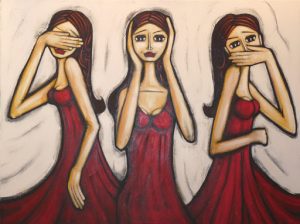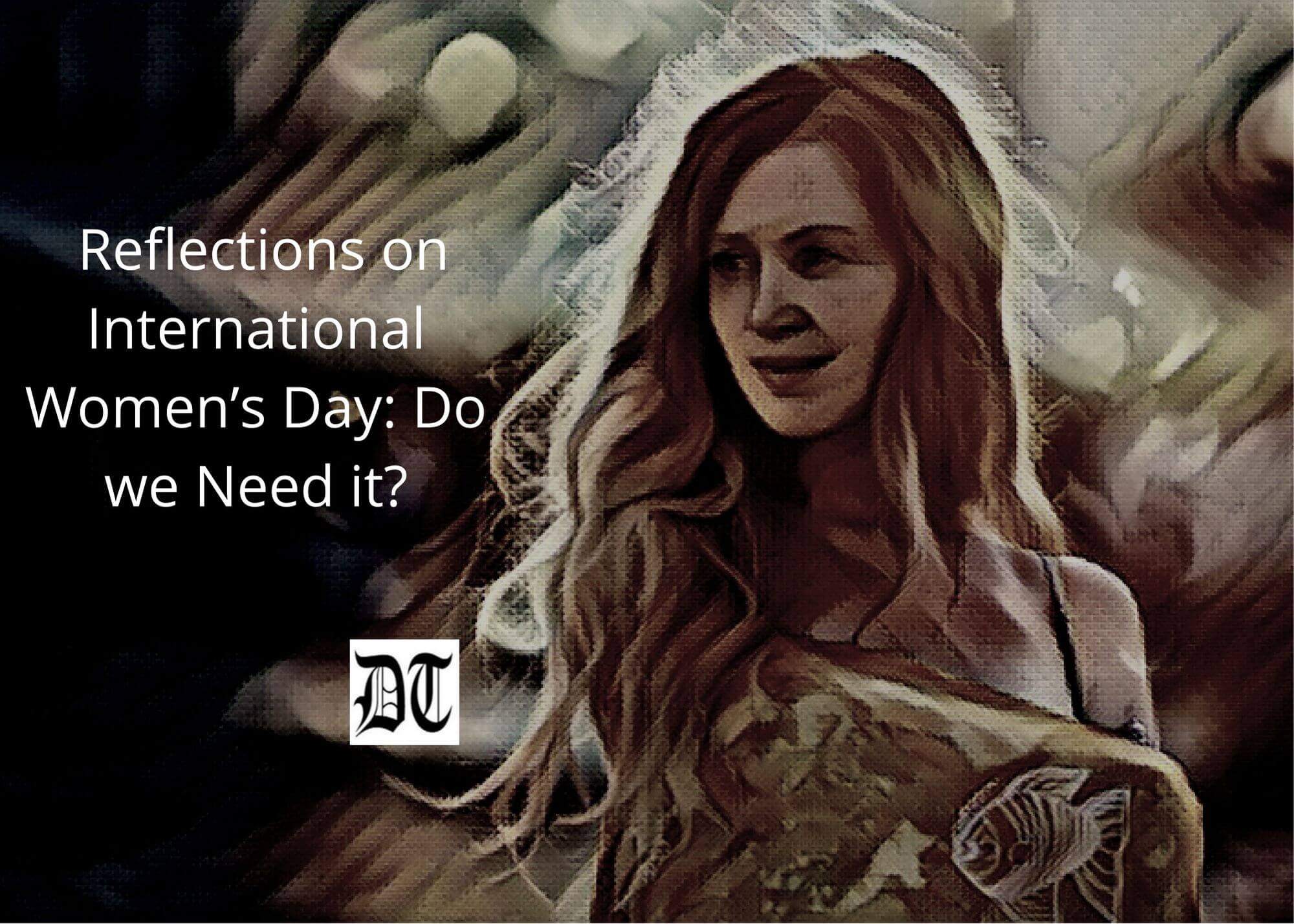Despite the overt challenges to patriarchy and misogyny that have been thrown at men, this covert transmission of bondage from women to women continues till date, rues Dr Pratima. An exclusive for Different Truths.
 In her collection of essays entitled Shrinkhala ki Kadiya (1942), Mahadevi Verma reflected on the idea of internalised patriarchy. The work exemplifies how the notion of patriarchy and the roots, which form the basis for the secondary treatment of women in society are transmitted silently, inadvertently from one generation of oppressed women chained in the bondage of patriarchy to the next. Despite the progress that women have made in several fields, despite the overt challenges to patriarchy and misogyny that have been thrown at men, this covert transmission of bondage from women to women continues till date.
In her collection of essays entitled Shrinkhala ki Kadiya (1942), Mahadevi Verma reflected on the idea of internalised patriarchy. The work exemplifies how the notion of patriarchy and the roots, which form the basis for the secondary treatment of women in society are transmitted silently, inadvertently from one generation of oppressed women chained in the bondage of patriarchy to the next. Despite the progress that women have made in several fields, despite the overt challenges to patriarchy and misogyny that have been thrown at men, this covert transmission of bondage from women to women continues till date.
In her collection of essays entitled Shrinkhala ki Kadiya (1942), Mahadevi Verma reflected on the idea of internalised patriarchy. The work exemplifies how the notion of patriarchy and the roots, which form the basis for the secondary treatment of women in society are transmitted silently, inadvertently from one generation of oppressed women chained in the bondage of patriarchy to the next.
Right from the birth of the girl child, the grandmothers and mothers instil the ideas of purity, chastity and duty as a wife in her through stories of the female figures of reverence, the venerated Sitas and Savitirs. These stories imbibe into her the supreme importance of marriage in the life of a girl. A child learns more by imitation than by dictation and watching the patriarchal set up in her household with the mother in charge of the domestic duties and the father earning money for the family, moulds her mind in a way in which she prioritises marriage over everything else. The overused paraya dhan (Somebody else’s property) truism forms the fertile ground in which the personality of a girl is shaped. She understands in no time that the bravery and courage symbolised by the toy guns are the boys’ share and the Barbie dolls with the dolls’ houses are her share in the system of the world.
Despite providing the best education, despite teaching the fine ideals of honesty, sincerity liberty, and equality to impressionable minds, the all-girls’ schools do not fail to have the essential needlework and home science, classes. These lessons are good because it trains young ladies in the basic life skills but unfortunately, such lessons are conspicuously absent from the boys’ school curriculum. It seems that only the girls need to know the domestic chores as they are primarily responsible for them. The menstruation is a typically ‘girl thing’, a hush-hush affair with the sanitary pads surreptitiously imported into black poly bags and hidden in the handkerchiefs or the library books to the school toilet for sudden and urgent use. The mothers and grandmothers instruct the girls to keep their natural bodily function a big secret so much so that the throwing away of sanitary napkins in poly bags, so that no one can see that one even uses them, is one of the biggest horrors of the teenage years and the fear of being seen fills the heart of a young adolescent girl with severe anxiety bordering on sin.
The menstruation is a typically ‘girl thing’, a hush-hush affair with the sanitary pads surreptitiously imported into black poly bags and hidden in the handkerchiefs or the library books to the school toilet for sudden and urgent use. The mothers and grandmothers instruct the girls to keep their natural bodily function a big secret so much so that the throwing away of sanitary napkins in poly bags so that no one can see that one even uses them, is one of the biggest horrors of the teenage years
As she grows into a full-grown woman with economic independence and the  power to face the world and decides to get married, she is bombarded with questions which are a steady reminder of her secondary status. Many a time the eyebrows are raised at her being a working woman and such clichés as “Will your parents-in-law allow to work after marriage?” or “Thank your fate and thank the gods for your husband is a gem since he helps you out in the household chores” or “Your mother-in-law is modern and has allowed you to wear jeans” from aunts and women in the neighbourhood are commonly heard.
power to face the world and decides to get married, she is bombarded with questions which are a steady reminder of her secondary status. Many a time the eyebrows are raised at her being a working woman and such clichés as “Will your parents-in-law allow to work after marriage?” or “Thank your fate and thank the gods for your husband is a gem since he helps you out in the household chores” or “Your mother-in-law is modern and has allowed you to wear jeans” from aunts and women in the neighbourhood are commonly heard.
How can we even conjecture the idea of equality in a society where such words such as ‘allowed’ and ‘permitted’ are used by modern and educated women and darted at independent women! Even the modern women bound in the chains of subtle patriarchy feel blessed to have a new home where they are allowed to work apart from shouldering the household responsibilities. The roots of patriarchy run profoundly deep and this gigantic tree cannot be felled by only giving economic independence to the women. The women themselves will have to liberate themselves from the insidious, subtle, bondage of patriarchy which still extensively pervades our unconscious mind. They have to rather “unlearn” the patriarchal ideas hammered through them since birth. Till the time the minds of women are emancipated from this bondage of patriarchy, all talks of women liberation tend to become hollow talks with no meaning. To conclude in a small poem:
In the new world, newly-sought equality
I spread my wings and aimed to fly
a free bird! thought I,
but my mother held me tight
and clipped my wings.
I cried hard but
Alas! I failed to fly.
I turned around and saw
an endless chain behind
of faces resembling mine
the mothers, grandmothers, great-grandmothers–
the wingless generations of female figures
cutting off the wings of thought
of the generation next.
Photo from the Internet





 By
By
 By
By
 By
By
Pratima ma’am has always been an inspiration for me… And this article justifies with the present scenario….ma’am has portrayed the feelings of every women!